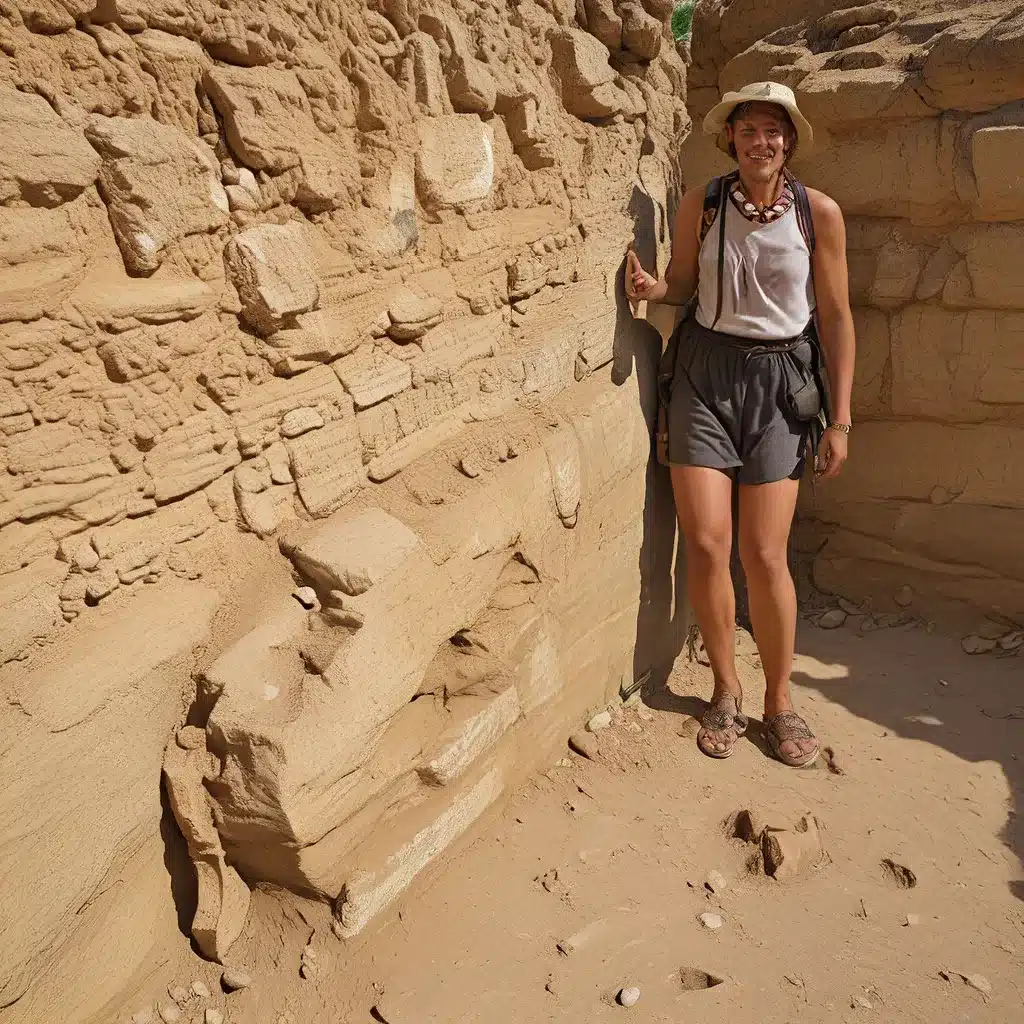
Uncovering the Past: Deciphering Ancient Clues
The pursuit of understanding our past is an eternal quest that has captivated the human imagination for millennia. From the majestic ruins of lost civilizations to the enigmatic artifacts that bear witness to the ingenuity of our ancestors, the field of archaeology has emerged as a crucial bridge between the present and the distant past. In this captivating exploration, we embark on a journey to uncover the hidden stories that lie buried beneath the sands of time, revealing the remarkable resilience and adaptability of our species.
One of the most intriguing aspects of archaeological research is the ability to trace the physical footsteps of our forebears. As Dr. Henry M. Miller, a Maryland Heritage Scholar, discovered, even the most seemingly mundane artifacts can hold profound insights into the lives of those who came before us. The discovery of a 17th-century child’s footprint preserved in a brick at the Garrett Van Sweringen site in St. Mary’s City, Maryland, offered a rare and poignant glimpse into the daily experiences of a young individual who trod the same ground centuries ago. This serendipitous find underscores the power of archaeology to bridge the gap between the past and the present, allowing us to forge a tangible connection with our ancestors.
Tracing the Pathways of our Forebears
Beyond the individual footprints, archaeological investigations have also shed light on the intricate networks of pathways and routes that our ancestors traversed. As Dr. Miller observed, the careful study of the landscape can reveal the subtle but enduring traces of human movement, such as the sunken paths worn down by the constant passage of feet over the course of decades or even centuries.
One such example is the path worn down to a spring by the residents of the 17th-century Clocker plantation in St. Mary’s City. By meticulously examining the topography and identifying the unnatural features in the landscape, Dr. Miller and his team were able to uncover the physical manifestation of the daily chore of water collection, a task that would have been repeated thousands of times over the lifetime of the plantation. Similarly, the twisted path leading down to the riverbank at the Van Sweringen site, now heavily overgrown, bears witness to the journeys made by indentured servants and enslaved Africans to access a freshwater source, a testament to the ingenuity and resilience of our ancestors in the face of challenging environments.
Unlocking the Secrets of Ancient Civilizations
While the footprints and pathways offer a tangible connection to the past, the work of archaeologists extends far beyond the immediate physical traces. By meticulously excavating and analyzing the remnants of ancient settlements, these intrepid researchers have unearthed a wealth of information about the diverse cultures that have shaped the human story.
One remarkable example of this is the Out of Eden Walk undertaken by the Pulitzer Prize-winning journalist and writer, Paul Salopek. Embarking on a 21,000-mile journey that traces the migratory path of our ancestors out of Africa, Salopek has immersed himself in the rich tapestry of cultures and environments that have defined the human experience. By walking in the footsteps of our forebears, Salopek has not only gained a deeper understanding of the interconnectedness of our global community, but has also uncovered a wellspring of captivating stories that shed light on the resilience and adaptability of our species.
Piecing Together the Puzzles of the Past
As the field of archaeology continues to evolve, so too does our understanding of the ancient world. With the aid of advanced technologies, researchers are now able to uncover and analyze data with unprecedented precision, shedding new light on the mysteries and complexities that have long captivated the human imagination.
From the awe-inspiring ruins of lost civilizations to the subtler traces of human activity etched into the landscape, the artifacts and evidence uncovered by archaeologists offer a unique window into the past. By carefully piecing together these fragments, we can begin to reconstruct the intricate tapestry of human history, gaining valuable insights into the cultural, social, and technological advancements that have shaped the trajectory of our species.
The Continuing Odyssey of Discovery
As we delve deeper into the annals of human history, the journey of archaeological exploration continues unabated. With each new discovery, we are reminded of the boundless resilience and ingenuity of our ancestors, who faced daunting challenges and yet managed to thrive in diverse environments around the world.
Whether it is the footprints of a child preserved in a brick or the well-worn paths that guide us to the hidden secrets of the past, the field of archaeology remains a powerful tool for understanding the human experience in all its complexity. By tracing the footsteps of our ancestors, we not only uncover the tangible remnants of their lives, but we also forge a profound connection with the universal story of our species – a story that continues to inspire and captivate us, even in the present day.


